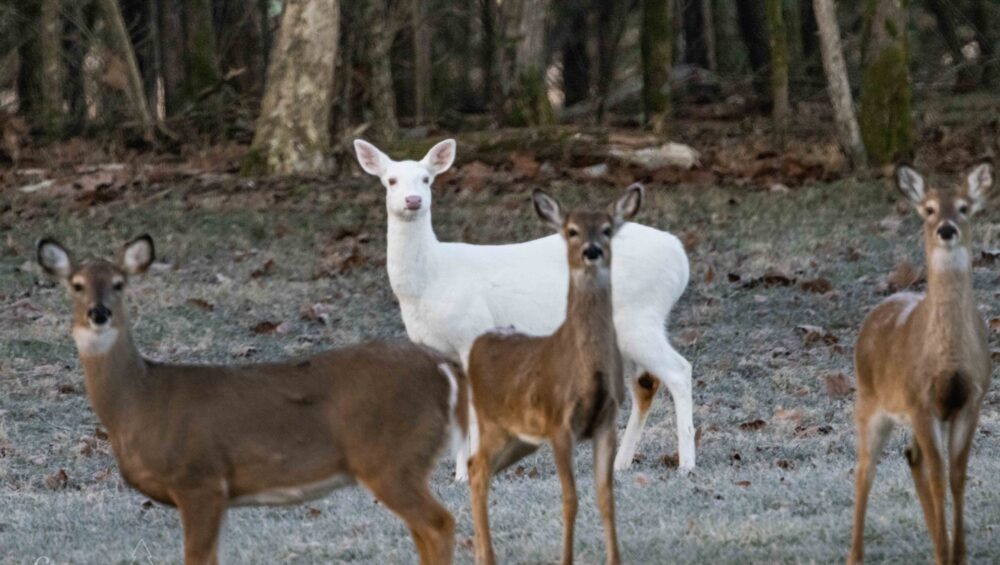If you are lucky, you may one day see an animal or bird lacking pigment in fur or feathers. A loss of pigmentation caused by a genetic mutation that interferes with the production of melanin is called albinism. Melanin produced in an animal’s body is the main pigment that determines skin, fur, and eye color. A true albino animal will typically have pink eyes. Albino animals are rare in the wild. They do not survive very long due to their conspicuous color and poor eyesight. Other forms of partial pigmentation loss such as leucism occurs more frequently.
Leucism does not completely eliminate pigment and can result in a variety of patterns. Leucistic animals will have some pigment in their fur, eyes, feathers, etc. A leucistic deer can vary greatly. In some instances, they may have some white splotches. In other cases, they may be half brown and half white or nearly all white. Piebald is a term used for mixed brown and white animals. Leucism in deer is a recessive genetic trait found in about 1% of the population.

Leucistic Squirrel
White leucistic squirrels are a tourist attraction in several U.S. cities. As with other animals, fur color in squirrels varies widely, and true albinos are rare. Even though most white squirrels are leucistic, the town of Olney, Illinois has a colony of albino squirrels. Approximately 12% of Olney’s squirrels are true albinos.

Leucistic and albino turkeys are also observed in the wild. There are several different color phases of turkey, such as the smoke-phase, which is much more common than leucistic or albino. The smoke-phase has a significant lack of brown pigments, and appears more gray or smoky looking. The majority (approximately 95%) of smoke-phase turkeys are hens.

Smoke-Phase Turkey Hen
Regardless of the cause of a rare color variation in nature, it is always an exhilarating experience when one has the opportunity to photograph it.
References:
https://www.nationalgeographic.com/animals/article/albino-animals
https://www.birdsandblooms.com/birding/birding-basics/albinism-in-birds/
https://www.wideopenspaces.com/white-wild-turkey/
https://blog.nature.org/science/2021/10/11/whats-up-with-white-squirrels-and-black-squirrels/
